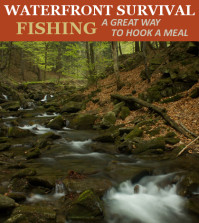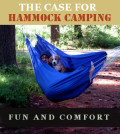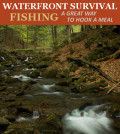Hammock Camping – The Case For the Hammock Tent

It’s like a recurring dream: we get close to our next campsite right around the time the sun decides to fall behind a huge mountain. Of course, there’s technically another hour of ‘daylight’ left, but nobody remembered the fact that we were settling down for the night on the eastern slopes of a big shadow casting geological behemoth. So, rather than taking our time to pitch camp, we have to rush around before the woods get even darker… great. This is fun.
However, the part where I feel quite prepared is the fact that it takes me 10 minutes to setup camp –while my buddies are still fumbling with their tent poles. How can I accomplish such a feet in so little time? I’m not rolling with a tent. I pack a hammock.
But They’re Just So Comfy, Your Honor!
Hammocks do seem like they would prove to be a complex system, not very trustworthy, and a hassle to setup. Though, in my experience, nothing could be further from the truth. Let me just lay it right out there (pun intended):
I’m always the first one unpacked, the first one setup, the most comfortable one out there, the first one to fall asleep, the last one to wake up, and the first one repacked and ready to go.
The comfort-factor for hammock systems is one of the most prevalent reasons why so many have made the switch. Essentially, you’ve suspended yourself above all of those annoying problems that we campers so often complain about during the night. You don’t have to clear out rocks, roots, or even look for a small stretch of level ground. Especially if you get an ‘asymmetrical’ version, you can even lie flatter, turn and sleep on your side, and get a wonderfully satisfying night’s rest.
Fast Pitch
As a hammock camper, there is one thing you will need to learn if you want to have a fantastic time with some insanely comfy nights: knots. However, once you know which knots to use and when to use them, pitching camp is an unbelievably easy undertaking.
If you’ve thought out your system, you will know fairly quickly how far apart you need your trees. Also, keep tree thickness in mind, as this will affect how much rope you need to use. What you don’t want is being short on rope, because slack is a wonderful thing. Using a series of climbing rings and carabiners, I can have my system up and running in no time. Here’s a quick YouTube video on how fast and easy it is to deploy your hammock for the night. The best part about the method in the video is the fact that takedown is a snap.
One tool you should absolutely have, especially for a super lightweight hammock setup, is your camp knife. In many cases, you might have to carve a toggle or stakes so that you have something to which you can anchor your fly. I usually don’t carry any tent stakes, simply because it’s very easy to just cut a point on a small stick and pound it into the ground with a rock.
Hanging… Anywhere.
One of the deciding factors for me was the fact that I was tired of pitching camp, only to find myself in a puddle before the night was over. It’s not because my tent gear wasn’t up to quality standards, and it’s not because I was unwise in my setup. Essentially, you never really know where the water is going to flow.
However, in my hammock I have never awoken in a puddle with a soaking sleeping bag. You’re up off the ground, so the only way you’re going to get wet is if your buddies drag you out of your sleeping back and throw you in the lake.
Another major plus is the fact that my gear never gets wet either, because none of it ever rests on the ground. Using carabiners, I simply hang it on the main line under my fly. Sure the outside of my gear my get a little damp if the wind is blowing, but nothing has ever gotten soaked. By the way, if you get ‘snake skins’, now bugs can’t even find their way to your gear or inside your mosquito net enclosing.
You can suspend yourself just about anywhere. I’ve even slept over a stream before. The rest of my buddies spent an hour in search of worthy ground for a night’s rest. They awoke in puddles that night, and I awoke to a thrown soup can because I snore too loudly.
The Case Against?
As with all things, there will be drawbacks…
One of these drawbacks is the cold. In the event that you are winter camping, you are going to need to bring extra gear. An advantage of sleeping on the ground is the fact that you can trap heat between you, your insulating bedroll, and a ground that’s a bit warmer than the air around you.
In a hammock, you literally have cold air blowing under you, and this will sap your body heat like crazy. This is why a lot of people have to bring extra winter gear, very efficiently warm sleeping bags, and sleep in their thermals. If you’re hammock camping in the winter, then be prepared to pack specifically for nasty cold nights suspended in the wind chill.
Also, the most obvious problem with hammock systems is when I don’t have trees available to me. However, this problem can be remedied with two sticks pounded firmly into the ground.
You can sleep with your hammock on the ground, and your fly suspended over you by anchoring with walking-stick-tent-poles. Basically, you just turn your hammock into a bivy for an evening. Versatility is the name of the game.
Though, you’d be surprised how little I’ve run into this situation. The wilderness has an abundance of trees, so you’ll only have to go with your ground-bivy setup once every blue moon.





